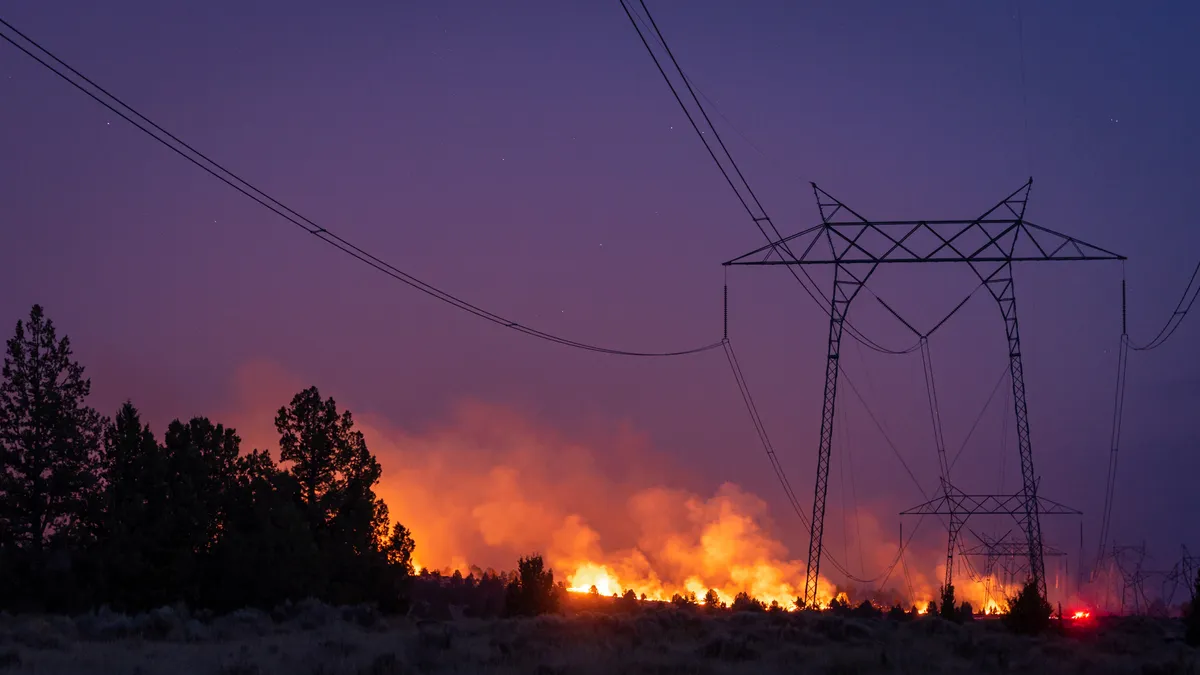The following is a contributed article by Mark Pischea, president and CEO of the Conservative Energy Network.
The clean energy sector has been one of the fastest growing industries in the United States for the last ten years, employing 3.4 million farmers, electricians, manufacturers, scientific personnel, and more — serving a wide variety of industries throughout supply chains in all 50 states.
Until last month, the sector had been a prodigious job creator not only in industrial regions, but also in rural America where those most vulnerable to economic shock and crumbling infrastructure live. Red states, blue states, purple states — every corner of the U.S. reaps economic benefits from the clean energy industry.
However, according to a new report released by Environmental Entrepreneurs (E2) the industry is among the hardest hit groups in the energy sector, losing roughly 106,000 jobs in the weeks immediately following the onset of the COVID-19 pandemic — not including furloughed employees or jobs lost in the month of April. In fact, the number of clean energy jobs lost in March alone is roughly 35,000 more than overall job gains across the sector in all of 2019. Current projections forecast that total unemployment could be as high as 500,000 by summer.
This loss has been felt throughout the country, but most acutely in rural and remote areas, where wind and solar installations are sometimes among the few providers of non-agriculture and retail jobs in the region. Additionally, the loss of infrastructure personnel in these areas puts grid security in jeopardy and runs the risk of leaving the communities who rely on these installations in the dark.
This sudden downturn also highlights national security concerns, as aging and undermanned energy infrastructure is more vulnerable to widespread outages caused by extreme weather or terrorist attacks. America must invest in a more adaptable, diversified grid solution, one that emphasizes a diversified energy portfolio of baseload and renewable sources and is structured around a more flexible workforce to be more responsive to such external shocks.
While this is all cause to worry, the E2 report also expresses optimism that upcoming economic stimulus packages will help get the renewable energy sector back on its feet, and hundreds of thousands, if not millions, of Americans back to work.
This optimism is not without foundation, as conversations about the fourth economic stimulus package, which will focus on energy and infrastructure, strike an encouraging tone for renewable energy. Voices on both the right and left have called for increased support and spending directed at the sector and, as with many hard-hit industries, time is of the essence. E2 points out that nearly two-thirds of all clean energy workers — 2.2 million people — are employed by companies with less than 20 employees. Small companies like this are some of the most at-risk during the shutdown due to their reliance on consistent business and access to financing.
Lowell Ungar, a senior policy adviser with the American Council for an Energy-Efficient Economy (ACEEE), described the impact saying, “energy efficiency requires having a whole infrastructure of contractors who are trained to do the work, supply chains that can get them the needed equipment and materials. Even from where we were a month ago, you would need to drastically ramp up that infrastructure.”
Among the many plans being considered on Capitol Hill, two are emerging as clear frontrunners for inclusion in the energy and infrastructure economic stimulus package. The first is the American Energy Innovation Act (AEIA), sponsored by Republican Alaska Senator Lisa Murkowski, and co-sponsored by Democrat West Virginia Senator Joe Manchin, lending it bipartisan credence. The second is the America's Transportation Infrastructure Act (ATIA), touted by Republican Senator John Barrasso of Wyoming. Both bills contain provisions that include significant relief and support to the renewable energy industry and benefit energy efficiency and grid security nationwide.
The AEIA contains over 50 provisions related to the sector such as support for energy efficiency, renewable energy including wind, solar, hydropower and geothermal, energy storage, grid and mineral security, industry workforce development and more. These provisions represent a large step forward in keeping energy affordable and the market competitive even as the sector pivots to deploying more renewable sources.
Additionally, the workforce development provisions promote job growth and retraining Americans as they get back to work. The renewable energy sector has already proven to be a fertile environment for good-paying opportunities not easily outsourced, and this trend can continue with the right market incentives. In fact, two of the fastest growing jobs in the country are solar installers and wind turbine technicians.
Senator Barrasso’s ATIA focuses more on infrastructure recovery, providing grants for such initiatives as grid resiliency projects, emissions reduction and alternative fuel infrastructure as well as providing states with $259 billion to spend on infrastructure modernization and development as they see fit, providing a needed boost to aging power grids and transportation systems nationwide.
Taken together, the provisions included in these relief plans represent an effective two-pronged approach to providing much-needed support to clean energy and infrastructure across America. They also provide encouragement for a previously surging sector that has been hit hard by the COVID-19 pandemic and the resulting economic downturn.
Most promising is that the inclusion of these provisions speak volumes about how important the renewable energy sector is not only to everyday Americans, but also to the politicians in Washington and in state legislatures across America who know that 3.4 million of their constituents (and growing), American workers of every stripe, are relying on them.
It is encouraging to see conservatives leading discussions on these proposed plans, but we must act now to help revitalize and modernize America’s aging infrastructure and energy grids. Together, these plans can help businesses turn the lights back on and get the country back to work for a brighter economic and energy future.



















